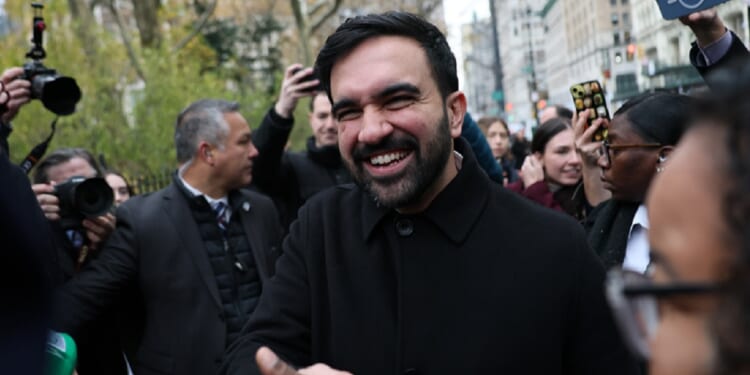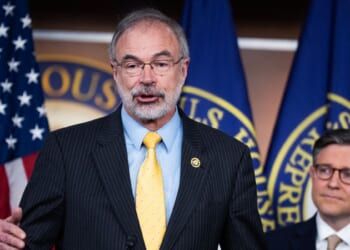If it was good for New York City Mayor-elect Zohran Mamdani, it must be good for the Democratic Party.
So goes the logic behind a proposal to implement ranked-choice voting in the 2028 Democratic president primaries.
According to a report from Axios, citing unnamed sources, top Democratic Party officials, including Democratic National Committee chair Ken Martin, have met with advocates of the system.
One argument in favor of the system was that voters’ choices would not be wasted after their preferred candidates are eliminated.
“I’m totally open to ranked-choice voting,” one DNC member said.
A second DNC member took the other view: “We should follow the lead of the states. They know better.”
Some Democrats identified in the report spoke positively of the idea.
“It favors positive politics rather than negative politics, and that’s a great thing for the Democratic Party primaries,” Democratic Rep. Jamie Raskin of Maryland said.
“Oftentimes, there’s a sense of acrimony and bitterness that can last decades. Think about the race between Hillary and Bernie Sanders,” he said.
Is ranked choice voting a bad idea?
Joe Biden pollster Celinda Lake said the system “gives a better chance to new faces, outsider candidates, people with grassroots movements, people who run positive campaigns, people who have something new to offer. It really meets the moment.”
Implementing ranked-choice voting would require approval from the DNC. Approvals would also be required from state parties.
🚨Report: Democrats are now considering implementing ranked-choice voting for the 2028 Democratic Presidential Primaries
Via: Axios pic.twitter.com/yZY63IoV1u
— The Calvin Coolidge Project (@TheCalvinCooli1) November 24, 2025
In this system, voters pick their first choice as well as multiple other picks in order of preference — that could come into play if their first choice is not elected, according to WNBC-TV.
Ranked-choice voting kicks in if no candidate receives 50 percent of the votes to win an outright majority
If that happens, the first round of ranked-choice voting eliminates the candidate with the lowest total of votes. The second-choice votes of voters who chose the eliminated candidates are then distributed accordingly and the totals are tallied again.
The candidate with the least number of votes is then eliminated.
This process continues, dipping as low on the list of picks as needed in the selections made by voters, until there are only two candidates left. The one with the most votes wins.
For example, on election night, Mamdani was in first place in the New York City Democratic mayoral primary with 43.5 percent of the vote, well ahead of the second-place finisher, former New York Gov. Andrew Cuomo.
Once all the other candidates were eliminated through the ranked-choice system, Mamdani ended up with 56 percent of the vote while Cuomo’s share was 43.5 percent.
Advertise with The Western Journal and reach millions of highly engaged readers, while supporting our work. Advertise Today.











